The Ministry of Defence has shed light on the introduction of the Protector drone to the Royal Air Force.
The Shadow Secretary of State for Defence, John Healey, asked for clarification regarding the timeline of the drone programme. The minister’s response came on the 19th of May in the House of Commons, offering some specifics.
“[…]Protector is expected to enter RAF service in late 2024, with an Initial Operating Capability declared in 2025.” Minister of State, James Cartlidge responded.
The Initial Operating Capability (IOC) of the Protector drone programme has been a subject of discussion in the House of Commons recently. This is the point at which a limited number of drones will be deemed suitable for operational use.
This is currently expected to be declared in 2025.
John Healey had queried the minister on the expected date for the IOC. The Full Operating Capability (FOC) is the stage at which the complete fleet of drones is expected to be fully operational. However, the date for this has not been definitively established, and according to the minister, will be confirmed at a later date.
“[…]The projected Full Operating Capability date will be confirmed later.” Cartlidge stated, adding a note of uncertainty to the proceedings.


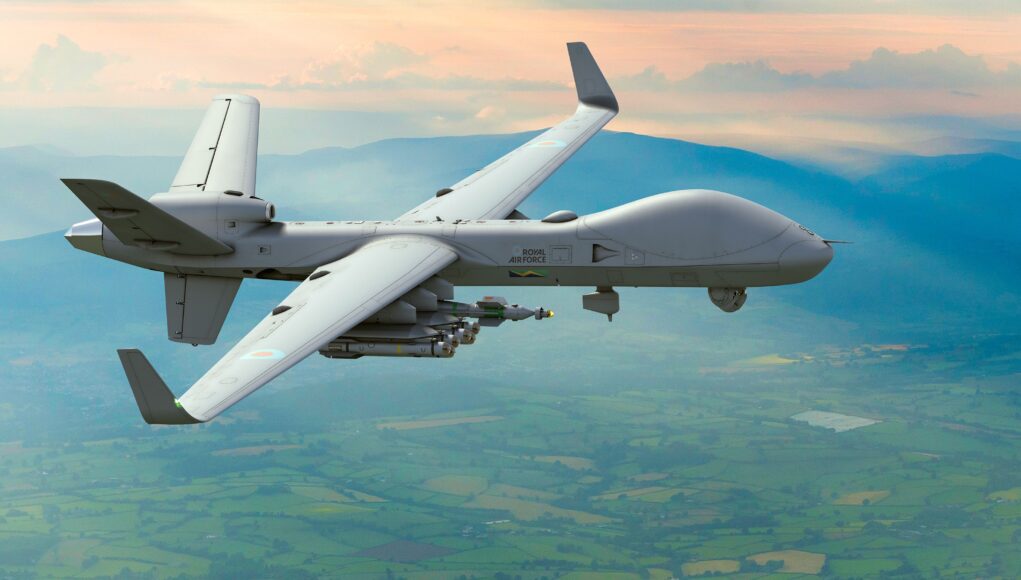

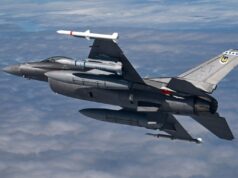

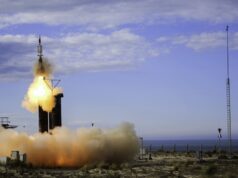
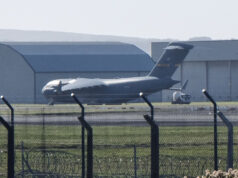

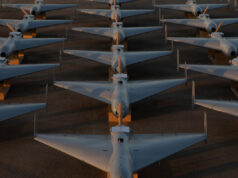
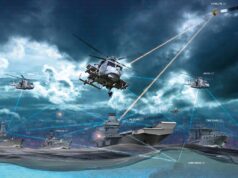


How many are we getting?
16, with options for more.
What sort of price-tag is Protector a pop?
When the plan was still for ‘up to 24’ it looked like it might be a real force multiplier which could make up for dropping fast-jet numbers.
Is there for instance still a need to use Typhoon’s on Op Shader. With no real air threat you’d think Reaper/Protector would be better for overwatch and strikes.
the 2019 Contract for 13+8 options was £195m, or £15m a pop. So a contract to make the fleet 50 today will be £510-680m
We are paying over the odds as MOD slowed down procurement to reduce annual spend. Usual false economies that both deny us capability and waste precious resources.
taranis isnt a project, it was a demonstrator
Good. Now we can expect an announcement that reaper will be retired in 2023. Capability gaps are required for new kit😂😂😂😂
I know.
I’d keep them in the ME myself.
Unless sufficient bandwidth is an issue.
Hi Daniele – sightly OT but the very good “Forces News” youtube channel has an excellent offering on the C130 Hercules retirement controversy where you can enjoy Cartlidge squirming
https://www.youtube.com/watch?v=fZgAnql0ALw
The incoming head of the RAF confirms that there will be a capability gap until the A400 comes through and admitted that 16 countries are bidding for the 11 serviceable Herc airframes we have left.
Well look at that 16 nations think the Herc is worth keeping….the simple truth is however good the A400 is and it’s a very very adaptable strategic transport it is not a tactical transport and trying to pretend it is just will not work..it cannot land in the same places a herc can simple as..than mean if that airfield is to small for a herc and to far for for a CH17 that means we cannot use it..and there are lots and lots of those around the globe in places the UK may need to go.
if we were to get rid of the hercs fine as long as we actually replace it with a tactical transport with more legs than a 200 mile combat radius…as the A400 can take the large tactical transport role..what we need is a mid sized tactical transport with the legs to do over 1000miles and be able to use air to air refuelling….
personally I think it would be a good time to look at something like the V22 as a tactical transport option…let’s stop looking at tilt rotor to replace our medium lift rotors..as medium life rotors are better at being meduim lift rotors than tilt rotors are ( they have a smaller foot print..can be used off the backs of frigates etc..land and hover in confined spaces etc..tilt rotors are rubbish at that) but they make very flexible tactical transports ( so replacement of CH17 and herc)…you can then look at air refuelling versions and some that can fly off the Elezabeths.
You only have to look at the shifty expressions on their faces to realise the truth. They will have scrapped the Hercs to pay for one of their cock-ups elsewhere. This has been going on for decades, they reduce capability to “save money” they have wasted somewhere else
And therein lies the truth, well said DL!
V22, that horrible expensive, uneconomical, super inefficient thing? I understand getting a couple for Special Forces but nothing more.
Compare its performance to a C-27J and it way inferior despite the V-22 having way more power is like 2x6000hp vs 2x4000hp.
well yes but we are getting rid of the hercs because “most” of its tasks can be covered by the A400…but we have a number of tasks that it cannot cover, that a tilt rotor could…we also have a lot of things that our carriers could use tilt rotors for…If you add up the tactical transport, carrier ops ( AEW, long range troop insertion, refuelling and re-supply) you could see a purpose…we are never getting a small fleet for niche tasking..that’s why the C-27j will never be an option, that small tactical lift between A400 and CH17 range limit is needed but it’s niche at best and would only need a small fleet of a handful of airframes….but something like V-22 fills a lot of jobs from CH17 to longer range tactical transport..to carrier ops…..yes it’s not as good as a dedicated tactical transport but we need more limited numbers of fleets that cover lots of role not different exquisite niche platforms for each role….only the US can piss away money like that.
A V-22 can transport 24 troops or 6000lb to 430nm
C27J can transport 60 troops or 10000lb to 2700nm.
The only reason to use V-22 is when VTOL is a necessity.
And Ch-47 have more capacity.
yes I understand it’s a better aircraft…but we cannot just buy small fleets for niche jobs as we are not the US..we have The A400 for the higher end of tactical transport…so what we need is something with a range that can air to air refuel but be useful for a lot of jobs not just a niche bit of tactical air lift between the A400 and CH17….we will never ever buy a small fleet just to cover that need..even if it’s a good option and it is…but we do need a tilt rotor for a lot of carrier based stuff but again it would not be a big enough fleet to justify the expense…but now we also have a gap in tactical transport needs just maybe the numbers justify a fleet.
so this is not about what is best…it’s about are there enough jobs to justify another airframe fleet as every fleet is a massive cost in supply, training and logistics…even if it’s just a few airframes.
Well you talk about adding V-22 which is a small fleet for niche jobs unless you are thinking of making an Op Market Garden do not make sense with such short range.
Australia have 10 C27J and it is not a large air force, plus C-130 and C-17.
Te Australians are looking to get rid of their C27s…….
To be replaced by more C130J’s! Anyone in the RAF taking notes, anyone?
Many of the comments seem to regard facts as an enemy. The A400 out performs the C27J on almost every metric, including short runway stopping distance. For “small” carriage use cases we have helicopters. Why do so many people struggle with replacing legacy equipment.
It seems that you regarding facts as enemy.
A-400 770m
C-27J 450m
Maybe you also ask the flight hour cost of 2 engine 2x4000hp vs 4x11000hp
Helicopters?! helicopter don’t do 1000km range and are a much less efficient than aircraft to move stuff from A to B.
Hi Okams.
Don’t recall ever chatting with you here before, but seen your posts of course. 👍
For me it is not a case of replacing legacy kit, it is just numbers. The A400 which now need to do the SF role, I suspect full time given that 47 Sqn was/is overwhelmingly assigned to the role when the SFF flight within it was enlarged due to UKSF Groups endless and expanding commitments, cannot now be doing other tasks. They cannot be in two places at once.
The commitments of the RAF ATF do not diminish, but expand, with fewer assets.
If replacement aircraft were ordered then no one has an issue with legacy aircraft being retired. They are not, the talk of additional Atlas is an aspiration years ahead and may never see the light of day. And in my opinion it is not the right choice due to its size. That is by the by, it can be used in the role, but should not need to be.
As for helicopters, UKSF also have 7 Sqn on Chinooks. They cannot deploy with the range and speed that a Hercules can.
They already lost 657 Sqn AAC previously with Lynx AH9s.
A range of assets are needed, which get culled year on year, and removing Hercules reduces options.
The SF are one of this countries gold plated Crown Jewell assets, and we keep removing their enablers. HMG know this, as they make money for HMG and have a diplomatic role by training, assisting other nations. We should not be cutting their supports.
The Hercules that are going also support the SIS, the Falklands, and the SPAG, all of which require one aircraft on standby, so that is 3 of 22 already gone.
Could a fix for those missions that may be lost using the refuelling probes on the merlin, chinook? It would also mean having a few A400 set up to tank or asking the American Hercules to help.
Mind you if we are asking the Americans or allies to tank they could just use that aircraft
Yes, agreed. I’d accept it if, as you say, another type was acquired, instead of using existing which are sub optimal.
On V22, interestingly, it is already available for UKSF use. Why else has a short runway appeared at a certain barracks? I understand it can take off with a short run before rising up vertically?
Hi Daniele, yes as I understand it the V22 can and does undertake rolling landings and take offs as it’s more efficient this way..also unlike tradition 2 engine helicopters if it losses an engine it cannot do a vertical landing and needs to do a rolling landing…it’s one of the reasons tilt rotors make a bad replacement for tradition medium lift maritime rotors…you cannot use them for small ship flights ever or safely in confined landing spaces..most people conveniently forget that. But for our carrier opps and as a tactical transport option they are not a bad idea and may just be doable from a fleet size and utility if you use them for all those roles.
personally I would just keep the hercs but…
Not all tilt-rotors have the single engine lift problem. Both the AW609 and V280 can land vertically with only a single engine. Plus they can both auto-rotate, which a V22 cannot. It would be entirely weight dependent on whether the Aw609 or V280 could take off vertically with only one engine.
This is due to one of the design requirements placed on the V22 when it was designed to replace the CH46 Sea Knight. The V22 had to be able to taxi past the island of a Wasp class LHD, with 3ft of clearance from the prop-rotors to 3ft clearance with the outer undercarriage to the edge of the deck.
So that the aircraft could do this, the prop-rotors and wing are shorter than the ideal. To replace the reduced amount of lift, the shorter blades spin faster. This gives them a high disc loading and therefore, without power they can’t auto-rotate for a safe landing or land vertically on one engine.
A really good read is the rands corp intra theatre air lift needs analysis for the US…it’s actually shows that the herc is to big for a lot and heavy rotor to limited in range…so interestingly when you look at the actual need around tactical air lift the V22 type is probably spot on….what it cannot do is cross over to lower level strategic air lift like a herc could.
So a range of assets are needed, light, medium, heavy, in both heli and transport fleets.
in an idea world you would have
heavy strategic air lift C-5 and C17 load 75k to 100k+ Kgs. Range 2500 to 5000 nmi but bound to 1500 meters runways so limites tactical air lift capabilities ( you need a lot of flat space)
strategic airlift/tactical air lift cross over A400 load 30k+kgs range 2000nmi able to land on small and prepared runways of 1000meters
tactical Air lift C130 or C27j load 10k-20k+ Kgs range 1000 to 2000 nmi runways of 500-1000 meters.
The issue is that although C130s and C27js can actually land and take off on runways 300-500 meters but that’s not actually carrying significant loads….so moving a special forces group yes…lugging 10-20,000 KGs of supplies to a Forward operating base…not unless it comes with 1000meters of flat ground and a prepared strip. This means a lot your tactical air lift requires rotors.
rotor tactical air lift Ch-47 or CH-53 load 10,000-20,000 Kgs, range 200 nmi, key issue are they are slow and vulnerable 150kn, but the range is the kicker…
This is actually where a good tilt rotor comes in as it can take on the role of both tactical airlift and rotor tactical air lift. It’s can carry 10,000kgs, it’s can do a round trip of 500mni to a forward operating base and back to an airfield, does not need a runway….yet can also do the traditional fixed wing tactical airlift role between airfields..10,000kg at 1000mni…it also traves at around 250-270kns.
then you have the added advantage you can operate it from our aircraft carriers and amphibious groups…it can take on a number of carrier ops such as COD, AEW, air to air Refueling.
if the UK had, C-17, A400 and V-22 it covers all the air lift roles and needs very well…infact you could even replace the CH-47s as well as the herc role…this would only works because we have A400 which covers the longer range heavier load work that the herc undertakes as the V-22 would take on the smaller loads, shorter range element as well as doing everything a CH-47
the bit a tilt rotor could not replace well is medium lift rotor they are to big and need to much space compared to a medium lift rotor.
Which is where cost comes in. We cannot even buy our own handful of V22, we use US examples for SF as needed.
Never mind a decent amount, 14 to 20.
Yes but an v-22 only Comes in a 84 million dollars which is not far off something like a C-27j at 82 million. All in All a fleet of 20 would only come in at £1000 million….which would be a bargain for what they would provide around tactical airlift, utility for the carriers and extended the range of any amphibious operations….
Oh. I thought we’d read on here each around 200 million. Less than I thought.
Slovenia has ordered a single Leonardo C-27J Spartan turboprop airlifter to bolster its air transport capability. The €72 million ($82 million) contract with the Italian government covers the cost of the aircraft—€48 million—and additional modules to support the carriage of cargo and passengers…(etc under paywall)
source aviationweek
Yes so to buy one that can actually do the tactical air lift role costs 82 million dollars.
So you compare the price of C-27J with a lot of extras like support but don’t do the same for V-22…?
Should not be?
C-27J = 56 M$
V-22= 84 M$
Since neither of us are in the procurement teams for buying either of those we have no idea what is or is not included in the V-22 price… what I am saying is the c-27j is not as useful compared to a v-22 from a range and payload yes the c-27j is a bit better..but it cannot land without a runway and it cannot land on a carrier or amphibious ship..that completely limits its options around light tactical air lift..which all we would need it for….as we have a fleet of A400s
payload of C27j 11,000kgs payload of v-22 10,00kgs
range of C27j with payload 1000 nmi range of v-22 900nmi.
what the c27j cannot do is land without having 500m of prepared runway…..that’s the kicker the Rand audit of tactical airlift need I quoted above clearly showed that even the U.S. with all its hercs and The massive CH-53 had a huge hole in its airlifts and that was the need to get loads to forward operating bases and areas beyond the 200nmi traditional rotor that only had vertical lift access..this the required far riskier overland resupply.
The final interesting point is the US get rid of its C27j fleet after five years…..but kept its v-22 fleet.
not saying the C27j would not be an option it just still leaves a big hole in tactical airlift that we could actually fill.
So the price you brought to discussion now don’t have value because i discovered that the C-27J price was lower.
That is false about 10 C-27J are in service in SOCOM and more in Coast Guard even recently gave upgrade contract to Leonardo.
And all V-22 are also in service of SOCOM excluding those of marines, none is being used for normal “transport” because it is a miserable ineficient aircraft for that.
C-27J were bought for the Army and there was a big budget fight with Air Force also over its control about whom had the power to control transport aircraft, USAF felt that Army was encroaching in area of its responsibility.
US Air Force don’t do tactical – see the hate it gives the A-10 -so when got the army C-27J contract cancelled it.
Well ok I did not clock the 7 airframes that went to SOCOM, I number also went to the coastguard…but the army and then the airforce divested themselves of the C-27J because is was not an efficient tactical airlift….just like your saying the v-22 is not.
let’s be honest we are just arguing around in circles because the best solution is simple option based on your and my perception of need, which is not in anyway the people who will make the decisions perception of need….I have clearly said that I think for small runway tactical airlift the C27j is fine…but it’s my view small runway tactical airlift is not the only problem..the other problem is tactical airlift for those areas without a small runway and that are to far for normal rotor…the rand and other organisations that have studies air lift need have point this out a lot..my view is this is an important Segment yours is not. That’s fine.
As for the price, sorry they are both referenced at around 80+ million, we don’t know what needs or does not need to be added to the V-22 to make it practical….in the end they are both in the same ball park price wise so it’s what you decide the needed is. I’m not sure why you are so vehement in your argument…..as this is about would the V-22 Match what it’s an identified need across the services..yes it does the C27j also match’s a need..yes a slightly different set of needs..what is most important in these is just your view and my view. On which need is greater. I think Vert tactical transport at ranges above 200nmi and and being able to operate off the carriers is more important than a slightly improvement in the runway based tactical transport at around 1000mni…( I mainly think this because we have A400 that covers most of this very well). But it’s just my option.
Our C-27J touched down at 110kt, “but tactical short-field operations are performed at 90kt to further reduce landing distance”, he said.
Scarabotto added that “by applying maximum reverse thrust and full brakes, the aircraft can stop in 300-450m [320m with a 27,000kg total weight] from touchdown”.
source: flightglobal
Yes well for a full load it’s documented as needing 500m, so 450 as a very best effort fully loaded is possible…most forces don’t tend to land in the minimum possible distance and make sure they have some distance spare…but it still needs a runway as I stated so I’m not sure what your getting at….so yes I’m sure they land it at 450m but that does not mean they will land it with only a 450m runway…that would be a bit risky.
It still cannot land in and supply a forward operating base without a 500m runway.
If the C130 is really needed by the SF, could they not fund it for an extra few years from there budget? If they could keep the fleet using up the spares etc and the already trained crews. Really depends a lot on budgets and how much that would cost.
Really if the replacements aren’t ready until 2025 that when it should go out of service.
The SF budget, apparently, is considerable. What it is spent on is of course a mystery to us but for the kit we are aware of.
Maybe it cannot cover the cost without hitting their own commitments.
The hercs are being cut to save cost rather than being excess capability, a capability that is clearly heavily relied on. They also have many years left in them if the money was available. As such no chance the v22 could be afforded, as if the cash was there the hercs would be way cheaper option.
The v22 would be a great addition for the carriers, to really make them far more flexible, but I can’t see the money ever coming available. Combine that with the news that the medium lift helicopter replacement plan has been delayed again, I assume due to lack of funds.
Hi Steve, not saying we should actually get rid of the hercs, I think it’s a bad idea. What was being discussed is that getting rid of the hercs leaves a gap in the light end of tactical lift. In my view this would be best managed by a tilt rotor light tactical lift option not a new fixed wing option.
But the government has invested 1.4 billion in the CH-47 fleet as an offset to losing the hercs.But as I discussed as very good as the CH-47 is ( and it is good) it’s absolute Achilles heal is range..it can only do a round trip of 200nmi.
My understanding is there isn’t an increase in the Chinooks, just a replacement of the older ones that are being taken out of service. Plus we appear to have gone down from 60 to 50 slowly and quietly. So no replacement just cuts.
Well let’s just say they are undertaking a recapitalisation of the fleet with 14 new airframes.
It’s amazing how many news sites reported this as an increase based on the official release, without fact checking it. Lazy mode reporting.
Hercs shouldn’t be going really which on this site we all know.I would say Ben Wallace knows this even though he’s defended the decision in the house of commons. PM twisted is arm maybe save money again 🙄💰
Farcial isn’t it. A sunset capability so many others would like to add to their own assets.
It is farcical.The best that can be said is that we will get the best price possible. Cartlidge admitted that there was no budget to keep the Hercs and if they had to they would have to – wait for it – “cut capability elsewhere to keep them”
So, the usual. An asset is got rid of for financial, not strategic, need.
Well they try to pretend that they are being got rid of because of over use…but that’s BS..they have a decade in them unless the airframe hours get burned up early in another decade long set of campaigns.
We have seen them put to good use in Ukraine. For me we need 36. 12 or more Sea Guardian for ASW and/or carrier ops (teamed with P8), 8 AEW teamed with E4 and also carried capable and 16 for armed ISTAR with SAR radar..
Is it me, or are we just incapable of designing , building and selling our own drones??